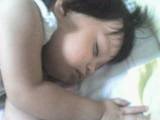Harapan Ramadhan
Raihan & Man Bai
Ku mengharapkan Ramadhan
Kali ini penuh makna
Agar dapat kulalui
Dengan sempurna
Selangkah demi selangkah
Setahun sudah pun berlalu
Masa yang pantas berlalu
Hingga tak terasa ku berada
Di bulan Ramadhan semula
Kali ini penuh makna
Agar dapat kulalui
Dengan sempurna
Selangkah demi selangkah
Setahun sudah pun berlalu
Masa yang pantas berlalu
Hingga tak terasa ku berada
Di bulan Ramadhan semula
Ku mengharapkan Ramadhan
Kali ini penuh makna
Agar dapat kulalui
Dengan sempurna
Kali ini penuh makna
Agar dapat kulalui
Dengan sempurna
Puasa satu amalan
Sebagaimana yang diperintahNya
Moga dapat ku lenturkan
Nafsu yang selalu membelenggu diri
Tiada henti-henti
Sebagaimana yang diperintahNya
Moga dapat ku lenturkan
Nafsu yang selalu membelenggu diri
Tiada henti-henti
Ku mengharapkan Ramadhan
Kali ini penuh makna
Agar dapat kulalui
Dengan sempurna
Kali ini penuh makna
Agar dapat kulalui
Dengan sempurna
Ku mengharapkan Ramadhan
Kali ini penuh makna
Kali ini penuh makna
Tak ingin ku biarkan Ramadhan berlalu saja
Tuhan pimpinlah daku yang lemah
Mengharungi segalanya dengan sabar
Tuhan pimpinlah daku yang lemah
Mengharungi segalanya dengan sabar
Ku mengharapkan Ramadhan
Kali ini penuh makna
Agar dapat kulalui
Dengan sempurna
Kali ini penuh makna
Agar dapat kulalui
Dengan sempurna
Ku mengharapkan Ramadhan
Kali ini penuh makna
Agar dapat kulalui
Dengan sempurna
Kali ini penuh makna
Agar dapat kulalui
Dengan sempurna
Ku memohon pada Tuhan diberikan kekuatan
Ku merayu pada Tuhan diterima amalan
Ku merayu pada Tuhan diterima amalan
Selangkah demi selangkah
Dengan rahmatMu oh Tuhanku
Ku tempuh jua
Dengan rahmatMu oh Tuhanku
Ku tempuh jua

